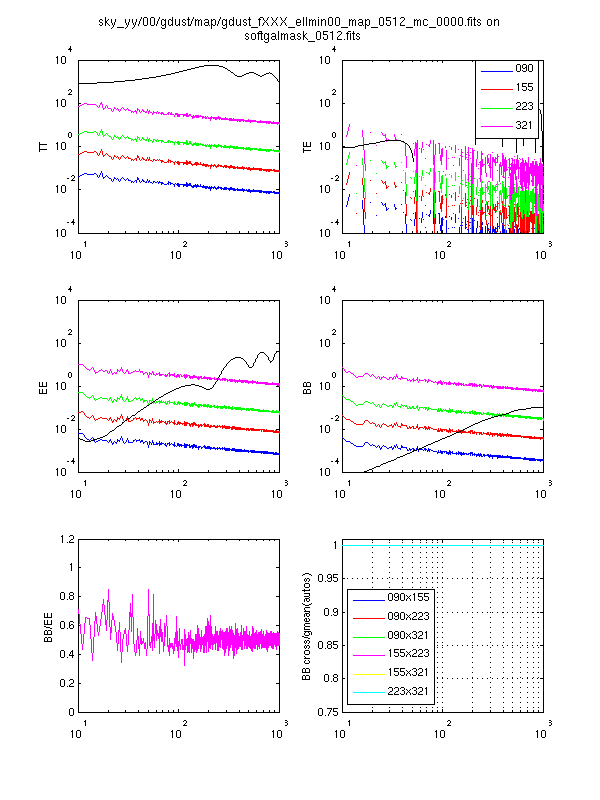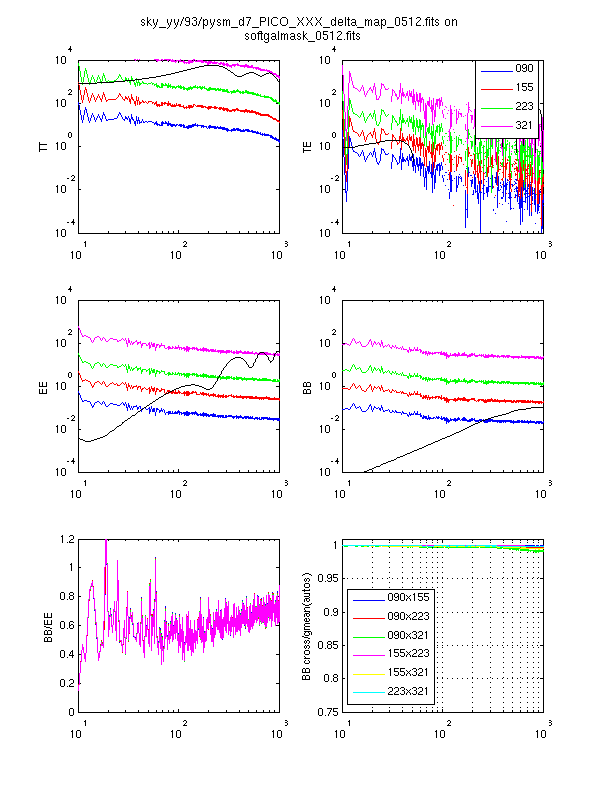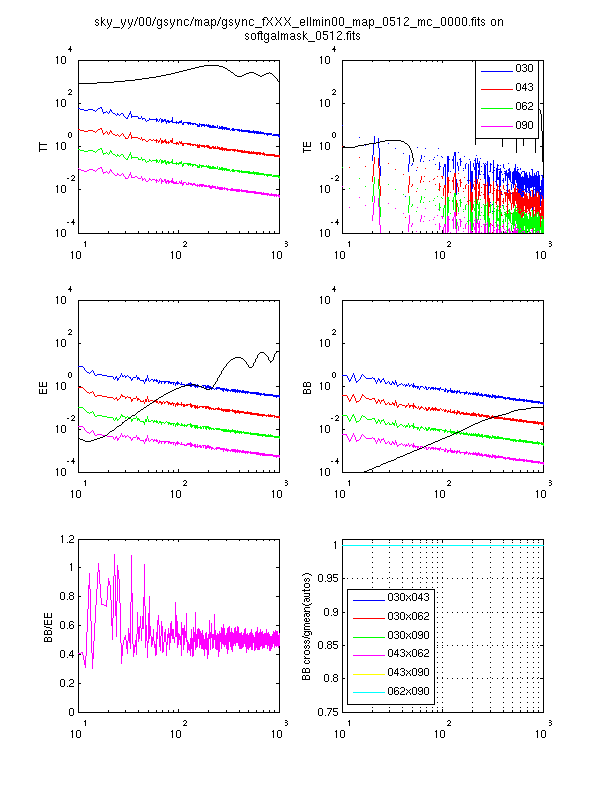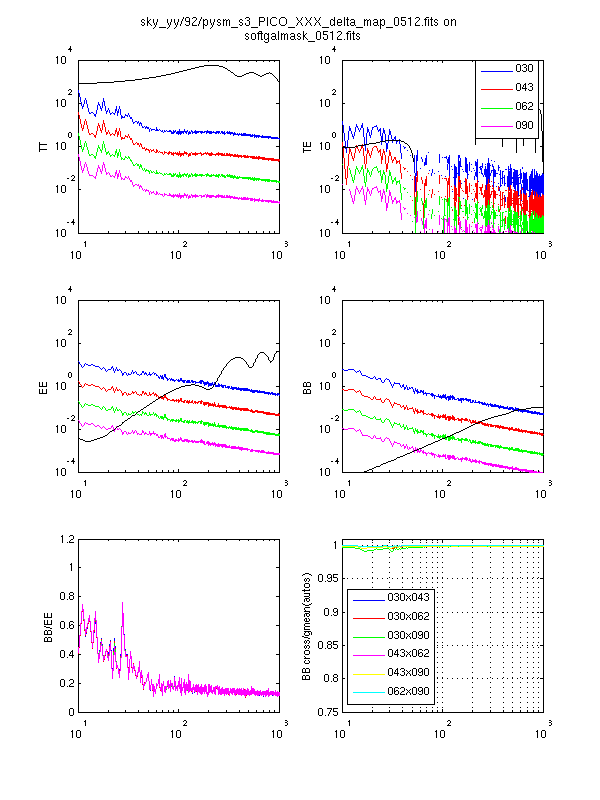Decorrelation plots for foreground models
Sept 14 2018, Clem Pryke
Most of the foreground models we are considering for PICO implement spatial variation of the spectral behavior at some level - this produces “decorrelation” - i.e. the sky pattern for a given foreground component changes as a function of frequency. This potentially degrades the efficiency of the component separation algorithms. In this post I look at the decorrelation of the dust and sync patterns by comparing cross-spectra to the geometric mean of auto-spectra (the lower right panel of each plot). We see that only the 98 and 99 (multi-layer and Vansyngel) models are significantly decorrelated in dust, and none of them are significantly decorrelated in sync.
I take the power spectra using anafast and the soft edge mask shown below. Since foreground do not have E»B this should be adequate.
To recap the models are:
- 00=Toy Gaussian models for dust and sync with uniform amplitude over the sky at level appropriate for the BICEP/Keck patch (i.e. way too low for PICO large sky coverage).
- 91=PySM a1d1f1s1 arxiv/1608.02841
- 92=PySM a2d4f1s3
- 93=PySM a2d7f1s3
- 96=Brandon's MHD model for dust and sync taken from /global/homes/b/bhensley/mhd_maps/maps_v1 on 180424
- 98=MKD multilayer dust model as described in arxiv/1706.04162. Since only dust is provided this is added to PySM a2f1s3 as per models 92 and 93.
- 99=Vansyngel model as described in arxiv/1611.02577 with multi-frequency extension. This model provides both dust and sync (and no AME or free-free is added.)
So we have 7 models for dust and 5 for sync.
Dust plots
Compare the below to fig 20 of https://arxiv.org/pdf/1706.04162.pdf


Sync plots










